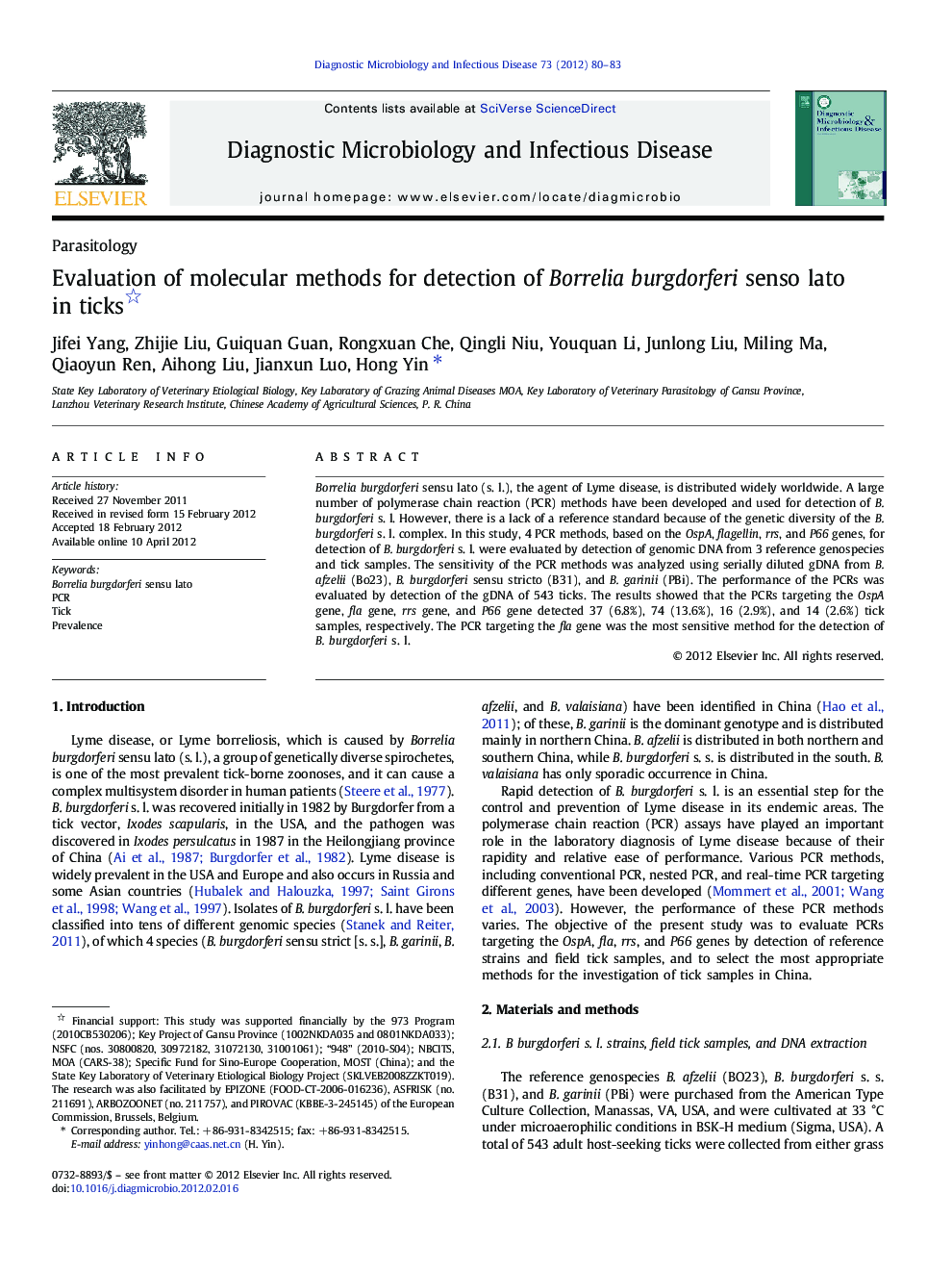| Article ID | Journal | Published Year | Pages | File Type |
|---|---|---|---|---|
| 3347343 | Diagnostic Microbiology and Infectious Disease | 2012 | 4 Pages |
Borrelia burgdorferi sensu lato (s. l.), the agent of Lyme disease, is distributed widely worldwide. A large number of polymerase chain reaction (PCR) methods have been developed and used for detection of B. burgdorferi s. l. However, there is a lack of a reference standard because of the genetic diversity of the B. burgdorferi s. l. complex. In this study, 4 PCR methods, based on the OspA, flagellin, rrs, and P66 genes, for detection of B. burgdorferi s. l. were evaluated by detection of genomic DNA from 3 reference genospecies and tick samples. The sensitivity of the PCR methods was analyzed using serially diluted gDNA from B. afzelii (Bo23), B. burgdorferi sensu stricto (B31), and B. garinii (PBi). The performance of the PCRs was evaluated by detection of the gDNA of 543 ticks. The results showed that the PCRs targeting the OspA gene, fla gene, rrs gene, and P66 gene detected 37 (6.8%), 74 (13.6%), 16 (2.9%), and 14 (2.6%) tick samples, respectively. The PCR targeting the fla gene was the most sensitive method for the detection of B. burgdorferi s. l.
